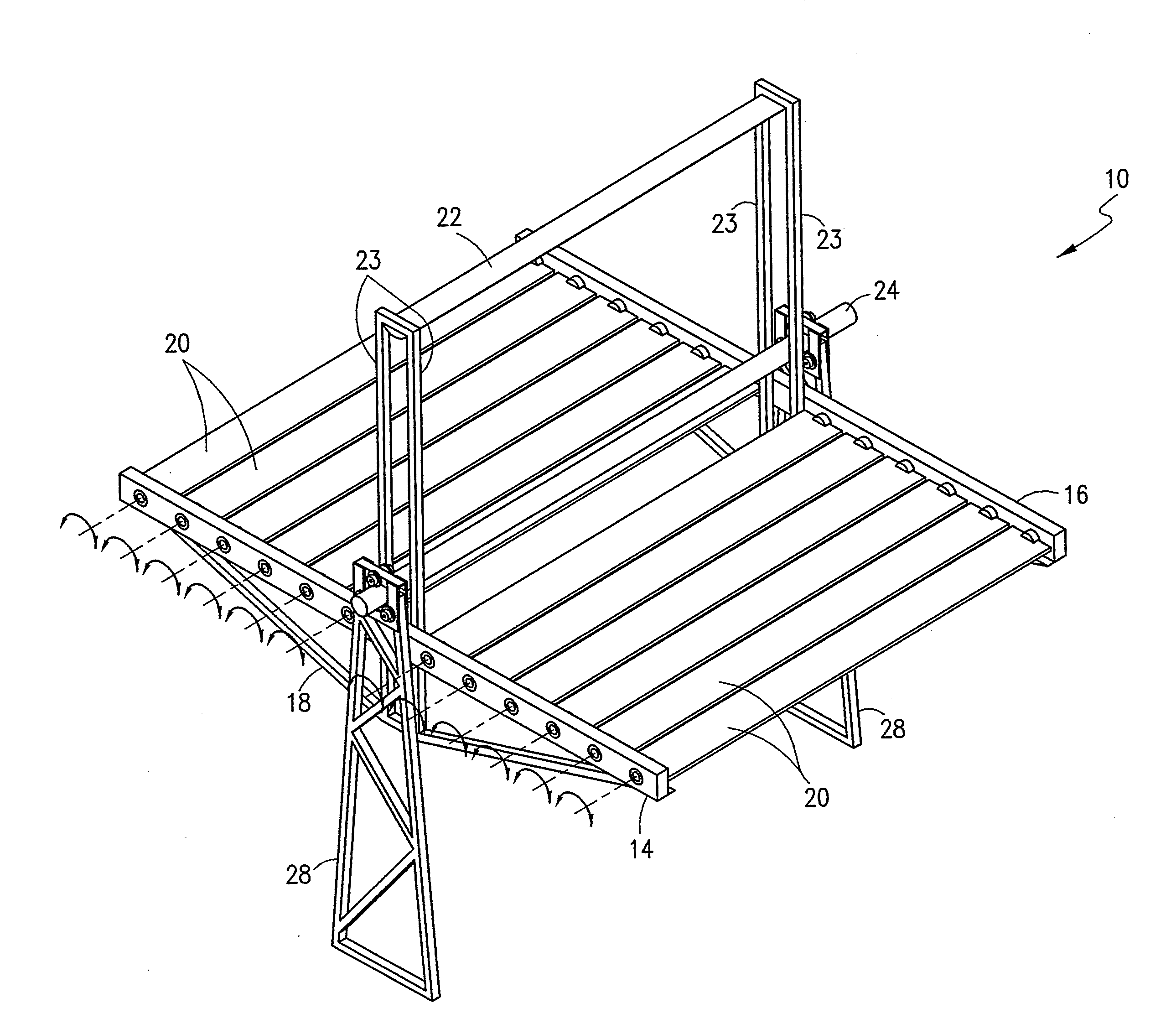Modular fresnel solar energy collection system
- Summary
- Abstract
- Description
- Claims
- Application Information
AI Technical Summary
Benefits of technology
Problems solved by technology
Method used
Image
Examples
Embodiment Construction
[0026]Referring now to the drawings, one embodiment of a reflector unit 10 for the solar energy collection system 12 of this invention is illustrated with reference to FIGS. 1-10. The unit 10 is initially generally described, followed by a discussion of individual aspects of the design. Finally, an alternative embodiment of a solar energy collection system according to this invention is discussed with reference to FIG. 12-14.
[0027]With reference initially to FIG. 1, the reflector unit 10 comprises a pair of opposed beams 14 and 16, preferably formed of a light-weight, durable and weather resistant material such as aluminum. The beams 14, 16 may be reinforced by a truss structure 18, a portion of which is shown in FIGS. 1 and 8, that is also preferably formed of aluminum or similar material. The beams 14, 16 are spanned by a number of elongated solar panels 20 which are separated from one another so that there is at least some spacing between the side edges of adjacent panels 20. The...
PUM
 Login to View More
Login to View More Abstract
Description
Claims
Application Information
 Login to View More
Login to View More - R&D
- Intellectual Property
- Life Sciences
- Materials
- Tech Scout
- Unparalleled Data Quality
- Higher Quality Content
- 60% Fewer Hallucinations
Browse by: Latest US Patents, China's latest patents, Technical Efficacy Thesaurus, Application Domain, Technology Topic, Popular Technical Reports.
© 2025 PatSnap. All rights reserved.Legal|Privacy policy|Modern Slavery Act Transparency Statement|Sitemap|About US| Contact US: help@patsnap.com



